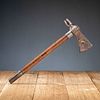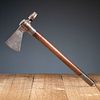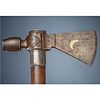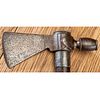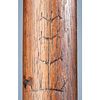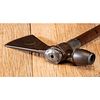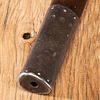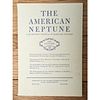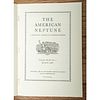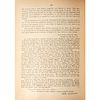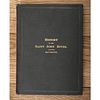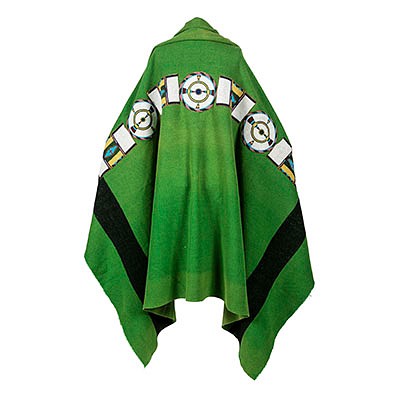Eastern Presentation Pipe Tomahawk, Descended in the Family of Captain Agreen Crabtree (1732-1808)
About Seller
6270 Este Ave.
Cincinnati , OH 45232
United States
With offices in Cincinnati, Cleveland and Denver, Cowan’s holds over 40 auctions each year, with annual sales exceeding $16M. We reach buyers around the globe, and take pride in our reputation for integrity, customer service and great results. A full-service house, Cowan’s Auctions specializes in Am...Read more
Two ways to bid:
- Leave a max absentee bid and the platform will bid on your behalf up to your maximum bid during the live auction.
- Bid live during the auction and your bids will be submitted real-time to the auctioneer.
Bid Increments
| Price | Bid Increment |
|---|---|
| $0 | $25 |
| $500 | $50 |
| $1,000 | $100 |
| $2,000 | $250 |
| $5,000 | $500 |
| $10,000 | $1,000 |
| $20,000 | $2,500 |
| $50,000 | $5,000 |
| $100,000 | $10,000 |
About Auction
Sep 18, 2020
Cowan's is honored to offer the collection of Robert P. Jerich, Illinois. His collection features unique beadwork including a pictorial Elk Dreamer Tobacco Bag and another bag, documented to Red Cloud. The auction begins with 68 lots of Ancient Art of the Eastern Woodlands. Cowan's Auctions dawnie@cowans.com
- Lot Description
tulip-shaped bowl and beveled molding attach to a forged steel head; inlaid on one side with a brass sun and crescent moon, opposite with copper tree, rain cloud, and initials O.C., length 6.5 in. x width of blade 2.25 in.; wood haft decorated with a silver end cap and bands located under the head and at the base, overall length 15 in.
late 18th - early 19th century
A similar tomahawk head is housed within the collections of the Smithsonian National Museum of the American Indian (collection no. 18/8272) and is noted as Sauk and Fox, dated 1829. Also published in Harold Peterson’s book American Indian Tomahawks (no. 139).
Family Lineage:
Constance Stratton Crabtree (b.1918)
Harvard Hersey Crabtree (1882-1971)
Henry Clay Crabtree (1844-1927)
John Dyer Crabtree (1805-1881)
Deacon George Crabtree (1771-1862)
Captain Agreen Crabtree (1732-1808)
Agreen Crabtree was born in Attleboro, Massachusetts in 1739. At a young age, Crabtree sought adventure. He tried his hand at many occupations including farming, fishing, and as a mariner. In 1760 he moved to Maine and opened a lumber and shipping business. When discord broke out between the British and French in 1775 along the northeastern coast, Crabtree saw his chance.
As described in a biography of Crabtree, A man who sailed before the mast… has left relatively few records. A delightful Maine rascal with the improbable name of Agreen Crabtree proves to be an exception to this rule… During the early years of the war, when Maine aggressively presented threat real and imagined for the imperiled British, Captain Crabtree scored outstanding victories on the high seas (1982: 6).
Crabtree, in his small eight gun, fourteen-man outfitted schooner, the Hannah and Molly, plundered British ships and loyal British settlements up and down the Northeastern Coast, primarily in the areas around and including Nova Scotia. Crabtree’s most notable success was the Raid at Port Medway, September 26, 1776, where he captured five British vessels off the coast of Nova Scotia.
In another documented raid which occurred in 1777, Crabtree sacked and plundered a British truck house at the mouth of the St. John River in Nova Scotia. It may have been at this point where he obtained this tomahawk. Truck houses were established in the British Colonies to control trade and foster diplomatic relationships with Native Nations and the British government. During this escapade, Crabtree obtained trunks of gifts for the British crown from the local Mi’kmaq and Maliseet people, as well as various other goods. The Superintendent of Indian Affairs at Machias and a patriot, John Allan, notes of a visit from Agreen Crabtree in his diary on November 17, 1777:
Capt. Crabtree came up to the falls and brought up a trunk he took at St. Johns with several pawns belonging to the Indians, and sundries belonging to the British Truck House on that river (1897: 319).
Allan again writes of Crabtree in a letter written the next day: A. Greene Crabtree arrived here yesterday. He has been to the mouth of St. Johns where he found a Truck House erected by the Britains under the care of Messrs, Hazen, White & Simonds, he took everything of their property only. Also all the Indians Pledges he has Bro’t & Delivered me, expecting some payment. I cannot say how far this was Legal for a Privateer, But I am extremely glad it is-done (1987: 319).Crabtree’s plunder at the truck house became a hot topic after the British negotiated a Peace and Friendship Treaty at Menaguashe with the Mi’kmaq and the Malecite on September 24, 1778. In a letter to John Allan after the signing of the treaty, Mi’kmaq and Malecite leaders proclaimed their loyalties to the Crown and demanded the return of the objects looted by Captain Crabtree the previous fall.
We desire you will return into the hands of Mr. White at Menaguashe the pledges belonging to us, which were plundered last Fall out of Mr. Hazen’s Store by A. Greene Crabtree, Capt. Of one of your Privateers: for if you don’t send them we will come in a manner you won’t like (Raymond 1897: 318-319)
It is unclear if Crabtree surrendered his plunder of the truck house. Captain Crabtree continued his looting through the end of the Revolutionary War, adding two other schooners to his raids.
References:
1982 Faibisy, John D. “The Greening of A. Crabtree: The Downeast Adventures of a Revolutionary Privateersman”. in The American Neptune. January. Vol. XLII. No. 1 (5-24).
1897 Raymond, Rev. W.O. “Selections from the Papers and Correspondence of James White, Esquire. A.D. 1762-1783”. in Collections of the New Brunswick Historical Society, Vol. 1, Issue 3 (306-340).
1905 Raymond, Rev. W.O. History of the Saint John River: A.D. 1604-1784. Saint John, New Brunswick.
Provenance: Descended through the family of Agreen Crabtree, MaineComes with a letter from the Crabtree family, stating their lineage. As well as a copy of The American Neptune: A Quarterly Journal of Maritime History from January 1982 and a copy of Glimpses of the Past: History of the River St. John, A.D. 1604-1784 by Rev. W.O. Raymond,LL.D - Shipping Info
-
Buyers are required to pay for all packing, shipping and insurance charges. Overseas duty charges are the responsibility of the successful Bidder. Be aware that for larger and/or valuable items, shipping charges can be substantial. - If there is no shipping amount on listed your invoice, you will need to make arrangements to pick up or ship your purchase through an alternative shipping company. Our shipping department can be contacted at 513.871.1670 (ext. 219) or email shipping@cowans.com. - Shipping charges include insurance for your order while in transit. If you have private insurance we will adjust your charge to include only packing and shipping. - Please allow 14 – 21 days after payment to package and ship your purchase as carefully as possible.
-
- Buyer's Premium



 EUR
EUR CAD
CAD AUD
AUD GBP
GBP MXN
MXN HKD
HKD CNY
CNY MYR
MYR SEK
SEK SGD
SGD CHF
CHF THB
THB
